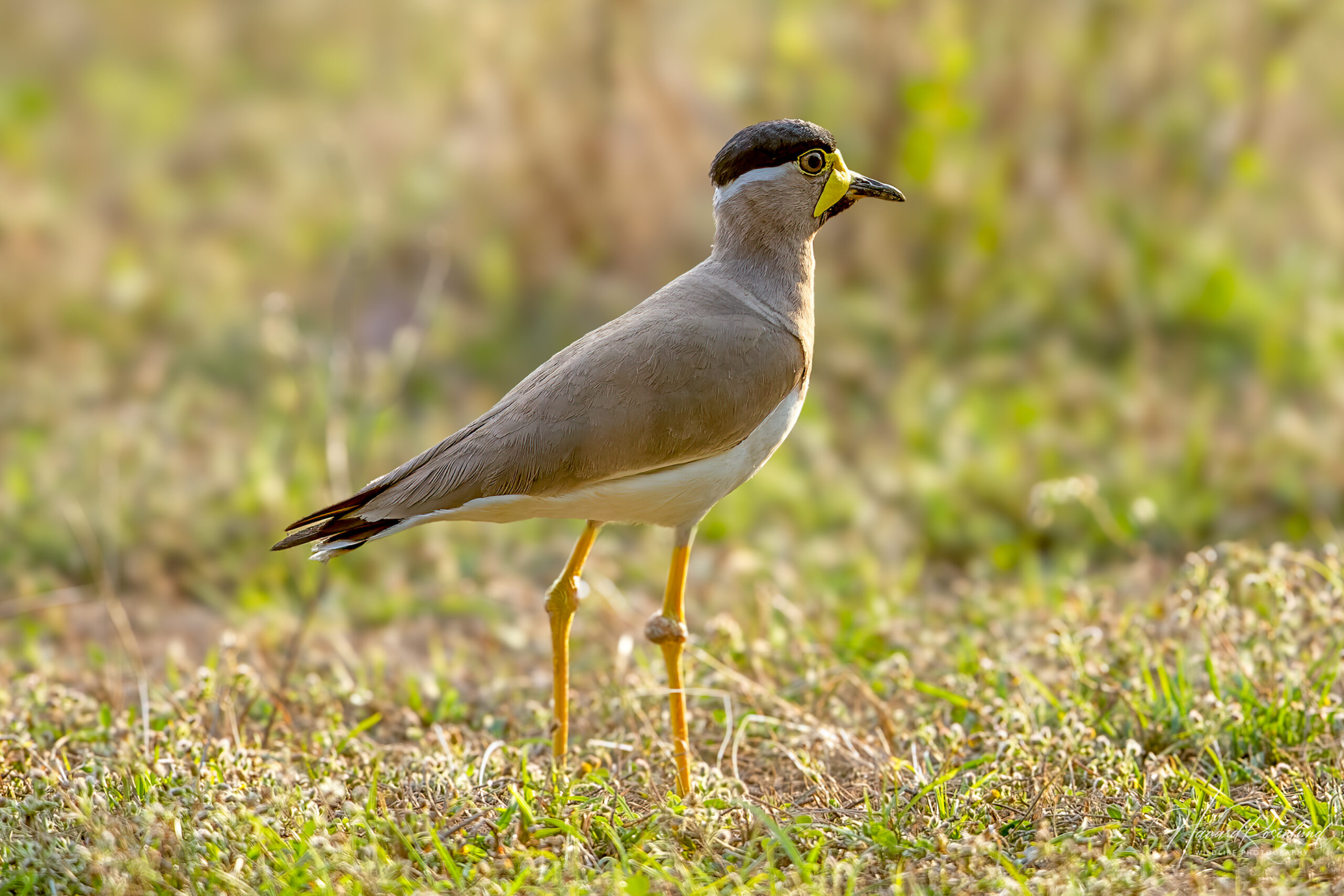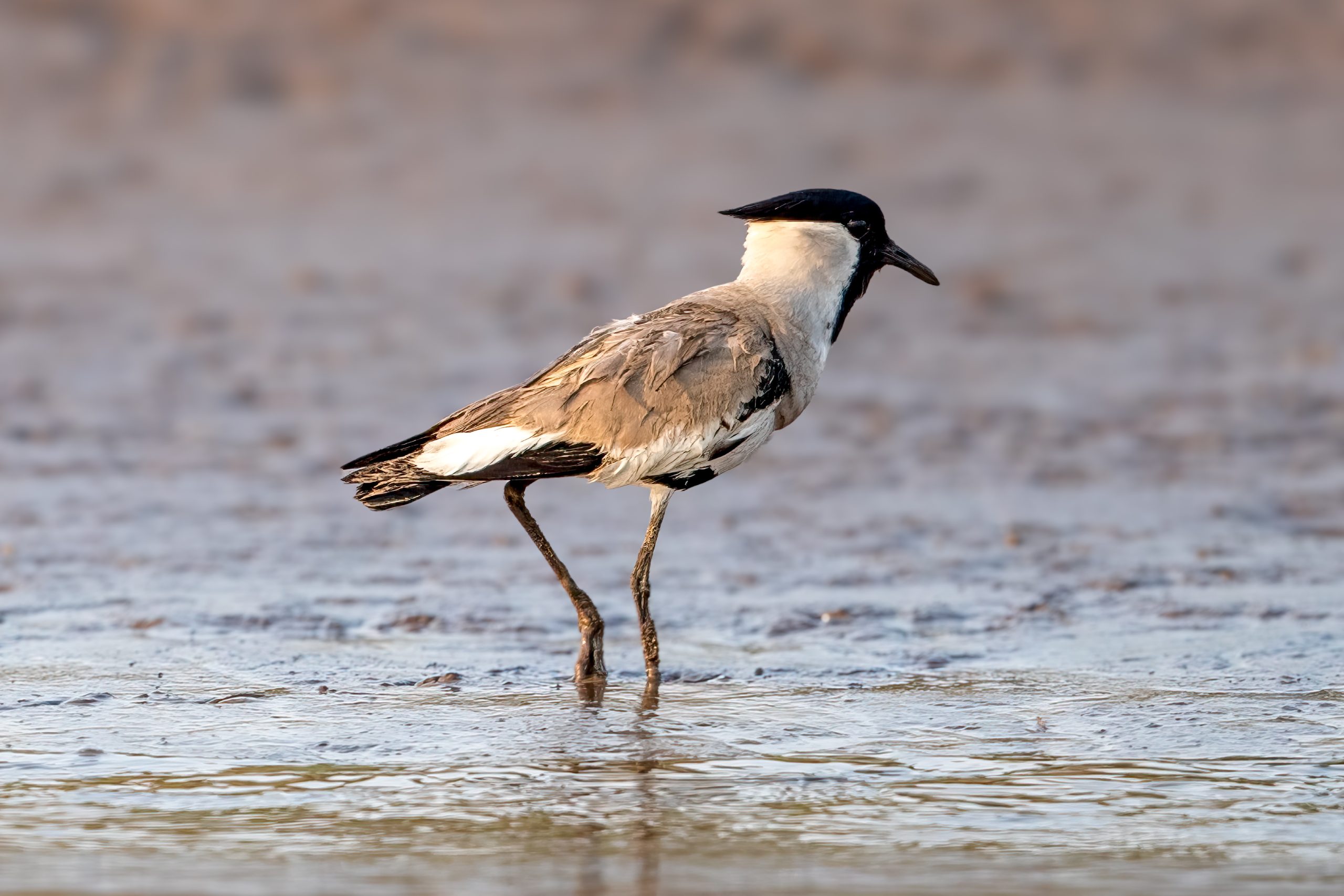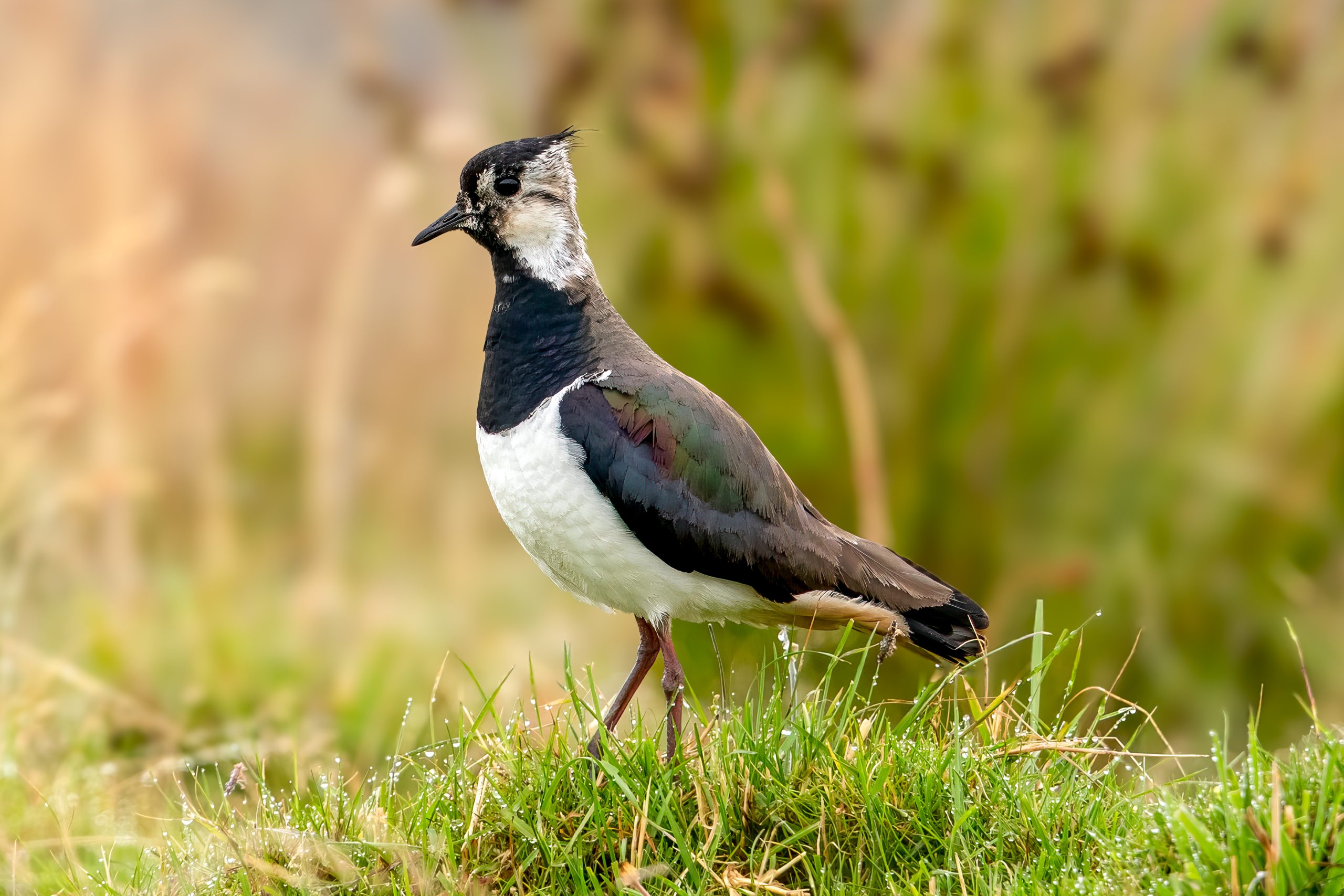Description
The yellow-wattled lapwing (Vanellus malabaricus) is a medium-sized wader with a distinctive appearance. It is found primarily in the Indian subcontinent, ranging from Pakistan and India to Sri Lanka. Adults typically measure around 28 cm (11 inches) in length. This species is easily recognizable by its yellow facial wattles, which stand out against its otherwise brown and white plumage. The upperparts are brown, while the underparts are white, and the bird features a black cap extending down to its nape. Its legs are bright yellow, matching the wattles. The yellow-wattled lapwing is known for its loud, distinctive calls, which it uses to communicate with other lapwings and to deter predators.
Diet & habitat
Yellow-wattled lapwings inhabit open, dry habitats, including grasslands, scrublands, and agricultural fields. They prefer areas with sparse vegetation, which provide ample foraging opportunities. These birds are ground feeders, primarily consuming insects such as beetles, ants, and termites. They forage by walking slowly and picking up prey from the ground, often using a technique known as “foot-trembling” to flush out insects. Occasionally, they may also feed on seeds and other small invertebrates. These lapwings are usually seen alone or in pairs, though they may gather in larger groups in areas with abundant food resources.
Nesting
The breeding season of the yellow-wattled lapwing varies geographically but generally occurs from March to August. These birds are monogamous and highly territorial during the breeding season. Males perform elaborate displays to attract females, including aerial acrobatics and vocalizations.
Nests are simple scrapes on the ground, often lined with small pebbles or grass. The female lays 2 to 4 eggs, which are cryptically colored to blend in with the surroundings. Both parents share incubation duties, which last for about 28-30 days. After hatching, the chicks are precocial and leave the nest within a day, following their parents and learning to forage for food. The fledging period lasts for about 40-45 days, during which the chicks are closely guarded by their parents.
This species has an interesting behavior of “feigning injury” to distract predators away from their nests. If a predator approaches too closely, an adult lapwing will pretend to have a broken wing, luring the threat away from the vulnerable chicks or eggs.
Status
The yellow-wattled lapwing is currently listed as a species of least concern on the IUCN Red List. It has a wide distribution and is common in many parts of its range. While there are no major threats to this species, habitat loss due to agricultural expansion and urbanization could potentially impact local populations. Nonetheless, the bird’s adaptability to altered landscapes has so far ensured its stable population trend.







